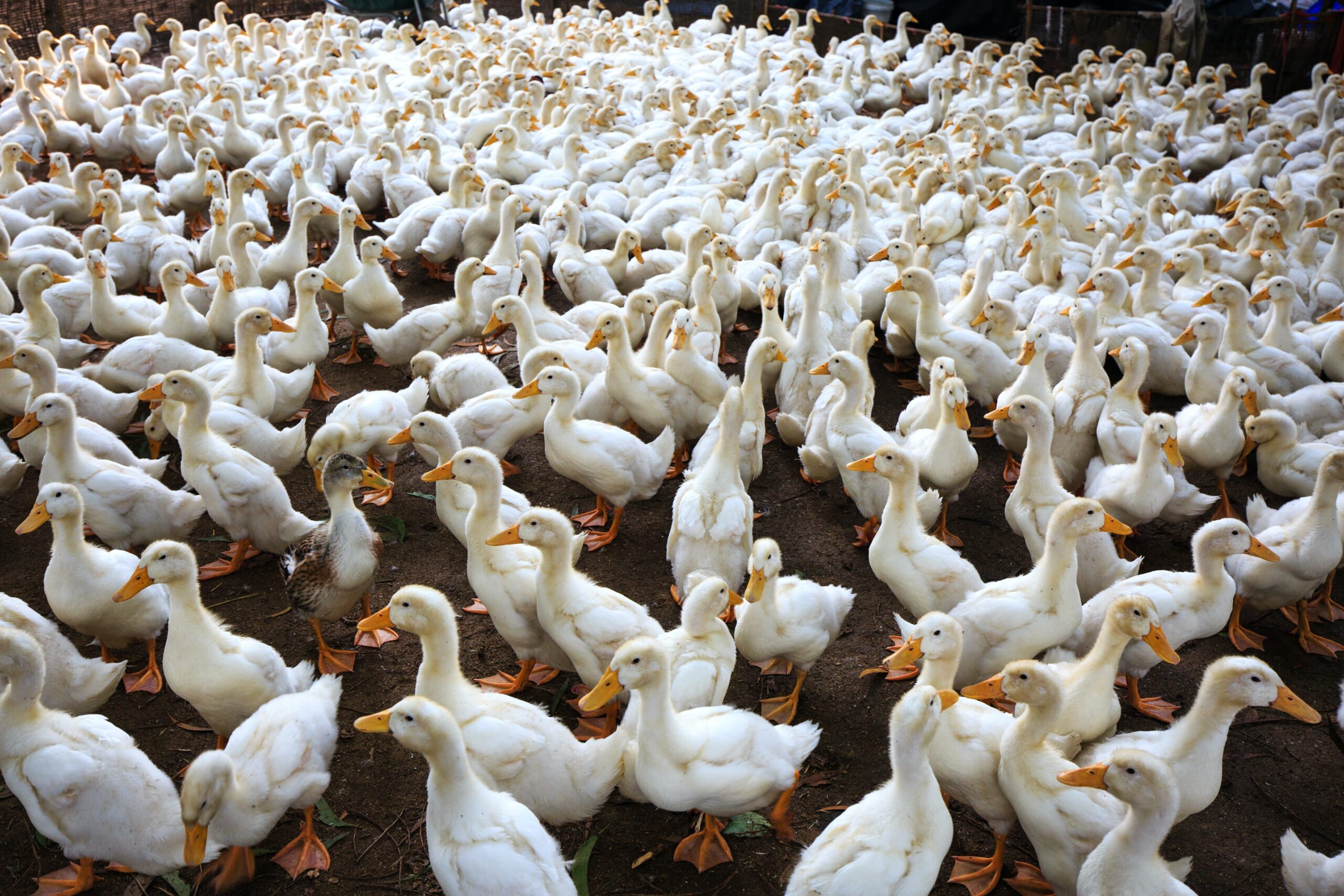The last outbreak of HPAI was an H5N2 outbreak in a 7,000 chicken commercial flock in Texas in 2004. The previous U.S. outbreak of HPAI was in 1983 in Pennsylvania (also H5N2). It took two years and the slaughter of 17 million birds to bring the outbreak under control. No human cases were recorded in either of these outbreaks. Evidence of LPAI H5N1 has been found in wild birds and domestic poultry in the U.S. in recent years and is not closely related to the more severe HPAI H5N1 circulating overseas.
Avian Influenza outbreaks in the U.S. with transmission to humans are documented by the Centers for Disease Control and Prevention (CDC).
Surveillance for H5N1 in the US
Wild Birds
Two Federal agencies and one state-Federal research partnership conduct surveillance for avian influenza in wild birds. The Department of Interior, U. S. Geological Survey screens wild birds for the presence of H5N1 with a particular concentration on the Alaskan flyway, Atlantic flyway and the Pacific flyway. Since 2000, thousands of migratory birds have been tested in the Alaskan flyway, with lesser numbers in the Atlantic and Pacific flyways. In that period over twenty avian influenza viruses have been isolated, none of them highly pathogenic. The Wildlife Services division of the USDA Animal and Plant Health Inspection Service also conducts wild bird surveillance. Their surveillance efforts are not restricted to specific flyaways. Also the Avian Influenza Coordinated Agriculture Project (AICAP), supported through the National Research Initiative and conducted by independent university scientists, has conducted targeted surveillance of the Pacific flyway. The U.S. Interagency Strategic Plan for early detection of avian influenza in migratory wild birds was published in March 2006.
Highly Pathogenic Avian Influenza Early Detection Data System (HEDDS) reports surveillance data on live birds, hunter-killed birds, sentinel and environmental sampling with over 44,000 samples tested in 2008. Thus far, HPAI H5N1 has not been found. However, USGS reported October 2008, migratory bird species, including many waterfowl and shorebirds, that frequently carry low pathogenic avian influenza and migrate between continents may carry Asian strains of the virus along their migratory pathways to North America.
- USGS researchers found that nearly half of influenza viruses isolated from northern pintail ducks in Alaska contained at least one of eight virus genes that were more closely related to Asian than North American strains. None of the samples contained completely Asian-origin viruses and none were highly pathogenic forms that have caused deaths of domestic poultry and humans.
- The central location of Alaska in relation to Asian and North American migratory flyways may explain the higher frequency of Asian lineages observed in this study in comparison to more southerly locations in North America. Thus, continued surveillance for highly pathogenic viruses via sampling of wild birds in Alaska is warranted.
Domestic Poultry
The National Avian Influenza Surveillance System (NAISS) is based on the Surveillance and Data Standards for USDA/APHIS/Veterinary Services (VS). These standards are designed to facilitate the collection, collation, validation, and analysis of accurate and representative surveillance data for a comprehensive surveillance program. Well-planned surveillance and data management at a national level will help ensure that the necessary data is efficiently collected and made available. This surveillance plan divides the domestic poultry population in the U.S. into four categories: the large-volume commercial poultry industry; the small-volume, but high-value, commercial poultry industry; the Live-Bird Marketing System (LBMS); and backyard poultry flocks.
Commercial Poultry Flock Surveillance Program
The program in commercial poultry is administered through the National Poultry Improvement Plan (NPIP) and includes monitoring of poultry production facilities and random testing of poultry flocks, including testing all birds that appear ill. As part of the program, USDA has worked with states to develop state response and containment plans. April 2009, the USDA Animal and Plant Health Inspection Service amended the sampling and testing procedures of NPIP to keep the provisions of the plan current with advancements in the poultry industry.
Under this surveillance plan to date, more than 245,000 flocks of meat-type poultry have been tested and none found positive for HPAI H5N1.
Backyard Flocks
Through the “Biosecurity for the Birds” program, USDA continues to encourage backyard and small poultry producers to strengthen biosecurity practices in order to prevent the introduction of avian influenza into their flocks and to report sick birds.
Live Bird Markets
A federal control and prevention program targeting the live bird marketing system involves regular monitoring and surveillance of all facilities in the voluntarily participating states, which are California, Delaware, Florida, Georgia, Illinois, Indiana, Kentucky, Maine, Maryland, Massachusetts, Minnesota, Missouri, New Jersey, New York, North Carolina, Ohio, Pennsylvania, South Carolina, Texas, Virginia, and Vermont. Those states with live bird markets that do not participate in the federal program have a state poultry surveillance program in place.






